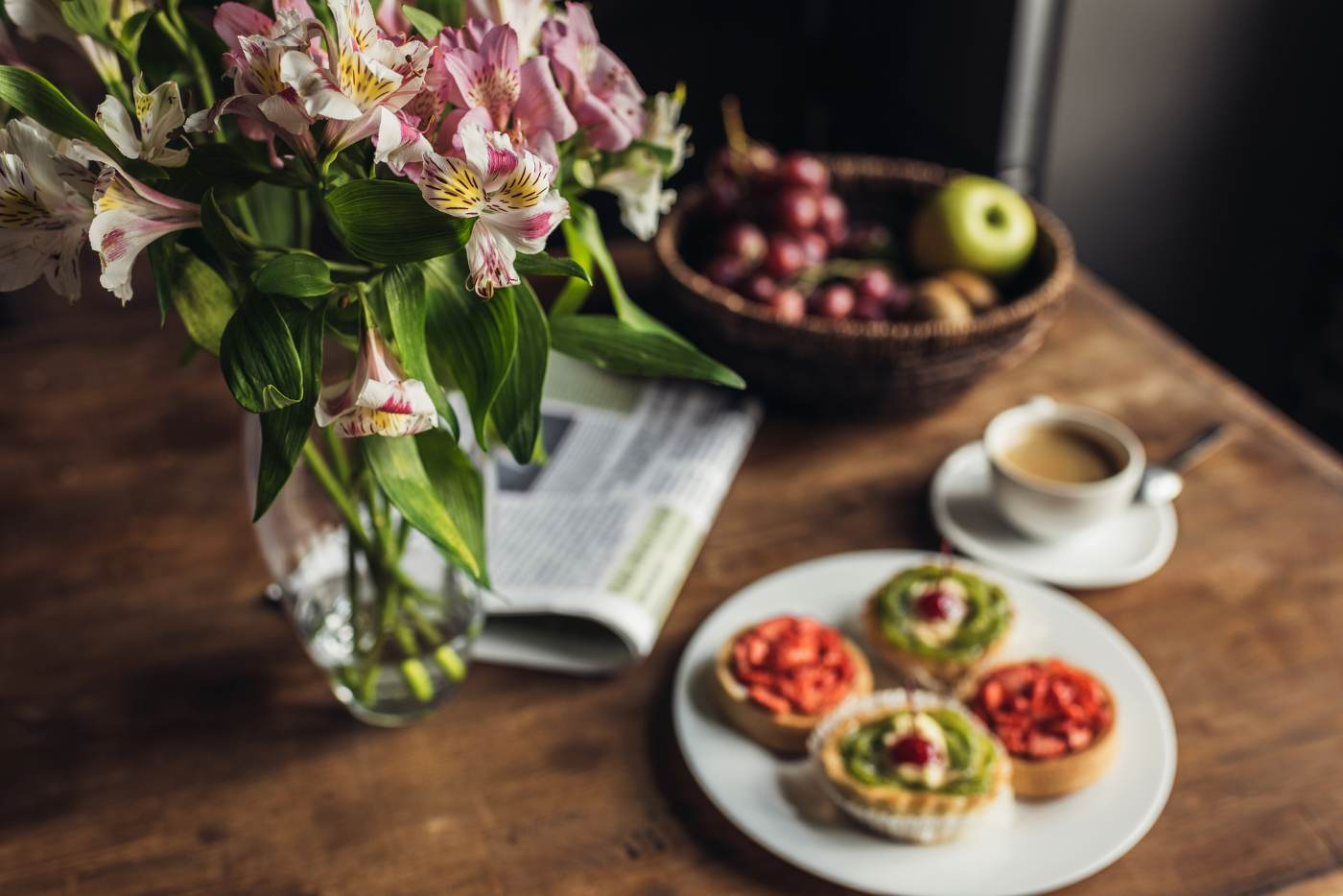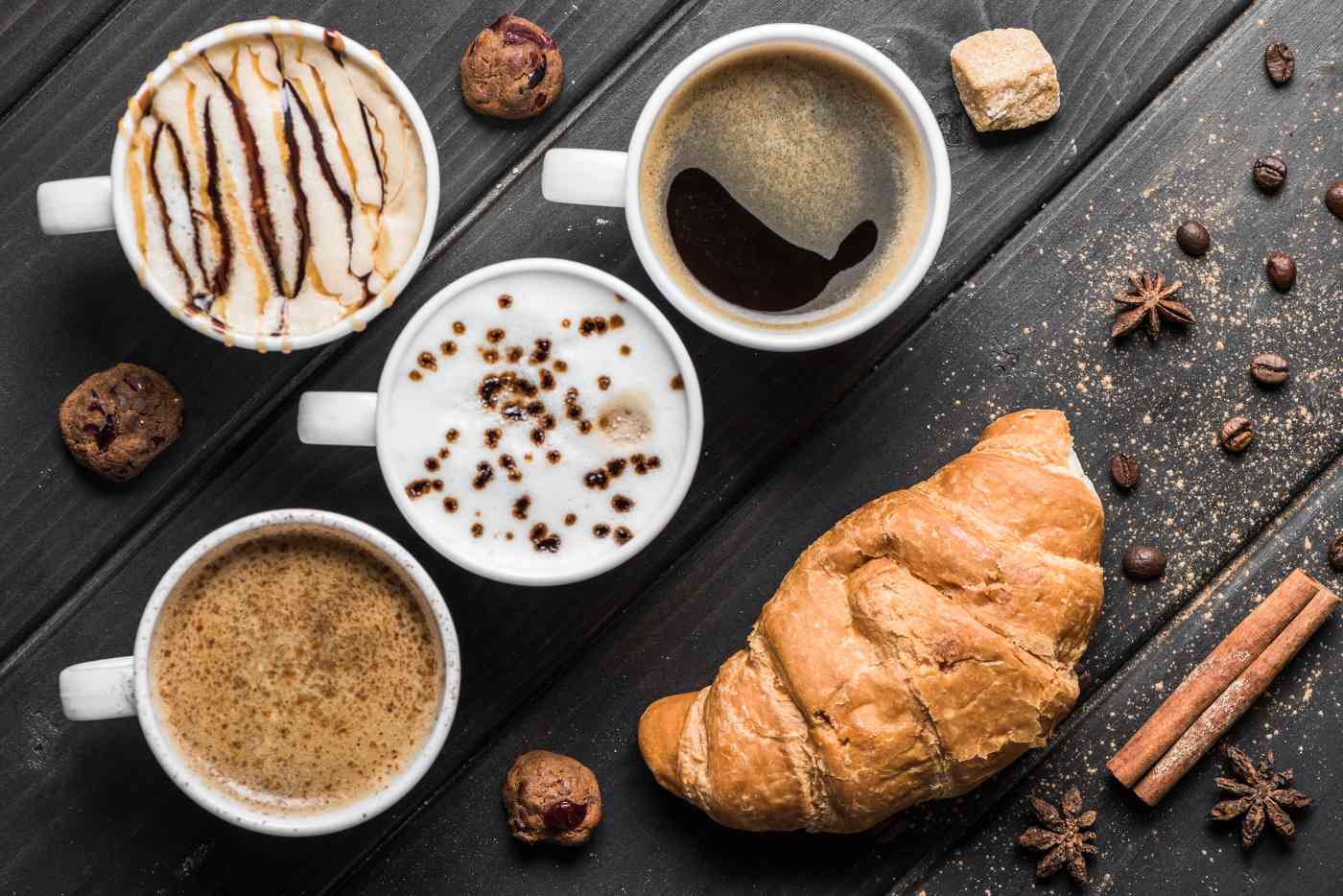When it comes to coffee and cuisine pairing, there are several key factors to consider. One of the most important factors is the flavor profile of both the coffee and the food.
Different coffee varieties and brewing methods produce different flavor profiles, with some coffees having notes of chocolate, caramel or fruit, while others have more earthy or nutty flavors. Similarly, different foods have their own unique flavor profiles, ranging from sweet and savory to spicy and acidic.
To create a successful coffee and cuisine pairing, it’s vital to identify complementary flavors and aromas.
For example, a coffee with a bold, smoky flavor can be paired with grilled mushrooms or spicy dishes, while a coffee with fruity notes can be paired with citrusy desserts or berry-based dishes.
Similarly, a coffee with a nutty flavor can be paired with nutty desserts or pastries. Visit this page to learn more about coffee flavors.
Another important factor to consider when pairing coffee and cuisine is the texture of both the coffee and the food.
The texture of the food can affect the way that the coffee is perceived, with heavier or creamier dishes typically pairing well with more potent, bolder coffees. Lighter dishes, such as spinach and strawberry salad or soups, may pair better with lighter, fruitier coffees.
In addition to flavor and texture, the aroma of both the coffee and the food is also important in creating a successful pairing.
Aromas can complement or contrast with each other, creating a unique sensory experience. For example, a coffee with a strong aroma of vanilla or cinnamon can be paired with desserts that contain these same flavors, creating a harmonious combination.
Coffee and cuisine pairing is an art that requires careful consideration of flavor profiles, textures and aromas. With the right pairing, coffee can enhance the overall dining experience and create a unique sensory experience for the palate.
Understanding Coffee Flavor Profile

A coffee’s flavor profile is determined by the type of coffee bean, the region where it was grown, and the roasting process.
The different types of coffee beans include Arabica, Robusta and Liberica, and they all have distinct flavor profiles. Arabica beans, for instance, are known for their fruity and floral notes, while Robusta beans have a more bitter taste. The roasting process also affects the flavor profile of coffee, with longer roasting times resulting in darker, smokier flavors.
To identify coffee flavors, one must consider the body, acidity and aroma of the coffee. Body refers to the texture of the coffee, while acidity determines the sharpness or brightness of the coffee. Aroma, on the other hand, refers to the fragrance of the coffee, which can range from floral to nutty.
Understanding coffee-tasting notes involves using a cupping spoon to sip the coffee and identify its flavor notes. Some typical coffee-tasting notes include chocolate, caramel, citrus and nutty flavors.
Understanding Food Flavor Profile
Just like coffee, different types of food have distinct flavor profiles. The different tastes of food include sweet, sour, salty, bitter and umami. Identifying food flavors involves paying attention to the ingredients used in the dish, the cooking method and the seasonings.
Understanding food tasting notes involves paying attention to the texture, aroma and taste of the food. Some typical food-tasting notes include smoky, spicy, fruity and earthy flavors.
Coffee and Food Pairing Basics
When pairing coffee and food, it is essential to consider the flavor and aroma of both the coffee and the food. Complementary flavors and aromas enhance each other, resulting in a pleasant effect.
For instance, pairing a fruity coffee with a berry-flavored dessert creates a tasting experience where the more subtle flavours of each can be better appreciated.
Contrasting flavors and aromas, on the other hand, can create a balance. For instance, pairing a bitter coffee with a sweet dessert can emphasize the bitterness and the sweetness.
Pairing Coffee with Foods

Pairing Coffee with Breakfast
Pairing coffee with breakfast food involves considering the intensity and flavor profile of the coffee and the food. A light-bodied coffee pairs well with a light breakfast, while a full-bodied coffee pair well with a heavier breakfast.
Some complimentary coffee and breakfast food pairings include pairing a nutty coffee with pancakes or a fruity coffee with yogurt.
Pairing Coffee with Lunch
A medium-bodied coffee pairs well with a sandwich or salad, while a full-bodied coffee pairs well with a black bean burger or substantial pasta.
Some complementary coffee and lunch food pairings include pairing a citrusy coffee with sushi or a chocolaty coffee with a spicy chickpea dish.
Pairing Coffee with Dinner
A full-bodied coffee pairs well with a hearty dinner, while a light-bodied coffee pair well with a lighter meal.
Some complementary coffee and dinner food pairings include pairing a smoky coffee with grilled portobello steaks or a vanilla coffee with a creamy pasta dish.
Pairing Coffee with Desserts
Pairing coffee with desserts involves considering the sweetness and flavor profile of the dessert. A sweet dessert pairs well with a coffee that has a caramel or chocolate flavor, while a fruity dessert pair well with a coffee that has a fruity flavor.
Some complementary coffee and dessert pairings include pairing a caramel coffee with a caramel custard or a nutty coffee with a chocolate hazelnut torte.
In conclusion, coffee and cuisine pairing is an art that involves pairing different flavors and aromas to create a unique sensory experience. Understanding the flavor profile of coffee and food is crucial in achieving a perfect pairing.
Consider the intensity of the coffee and food flavors and aim for complementary or contrasting flavors and aromas. Experimenting with different flavors and aromas and paying attention to the brewing method of the coffee can result in a perfect pairing.
Images: Depositphotos

